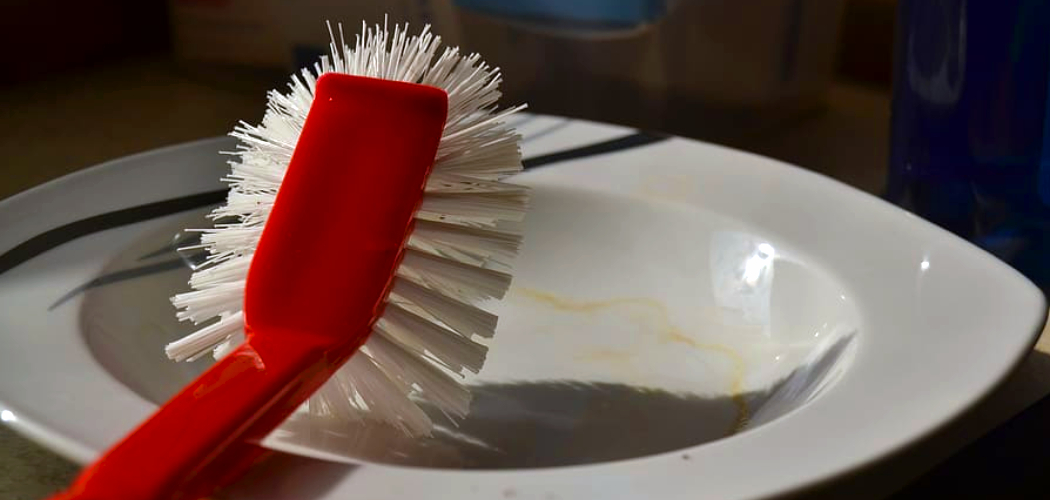Are you tired of the unpleasant odor of using a toilet brush? It’s a common problem, but thankfully, some easy solutions exist to eliminate odors and keep your bathroom smelling fresh. Here are some tips to prevent toilet brush odors.
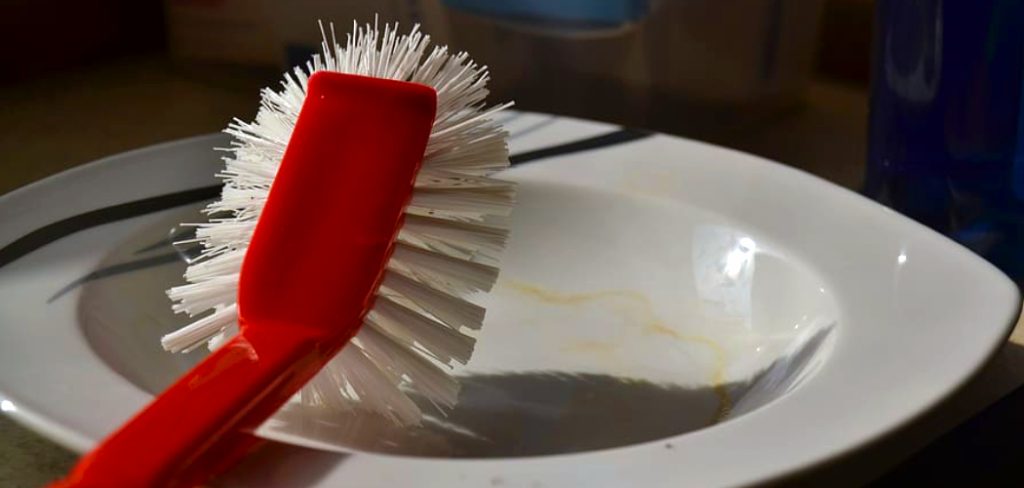
Keeping a toilet brush clean and odor-free is essential for maintaining a hygienic bathroom environment. Without proper care, toilet brushes can harbor bacteria and develop unpleasant smells. Fortunately, with a few simple cleaning and storage practices, you can prevent odors and ensure your toilet brush remains fresh and compelling.
This guide on how to prevent toilet brush odors will provide practical tips to help you maintain your toilet brush and keep your bathroom smelling clean and inviting.
What Are the Causes of Toilet Brush Odors?
Before we dive into prevention methods, it’s essential to understand what causes toilet brush odors in the first place. Here are some common reasons why your toilet brush might develop an unpleasant smell:
- Bacteria Buildup: As with any bathroom tool, bacteria can accumulate on a toilet brush over time. This not only creates a foul odor but can also spread germs and make the brush less effective for cleaning.
- Improper Storage: Storing a wet toilet brush in an enclosed space can cause mold and mildew to grow, resulting in a musty smell.
- Inadequate Cleaning: If you don’t clean your toilet brush regularly after use, residual waste and bacteria can accumulate, leading to odors.
These factors can all contribute to a foul-smelling toilet brush, but don’t worry – there are simple steps to prevent these odors from developing.
What Will You Need?
Before we get into the prevention methods, here are some supplies you may need:
- Toilet brush
- Bleach or white vinegar
- Dish soap
- Baking soda
- Lemon juice
- Essential oils (optional)
Now let’s move on to the tips for preventing toilet brush odors.
10 Easy Steps on How to Prevent Toilet Brush Odors
Step 1. Rinse the Brush Thoroughly After Each Use:
After every use, take a moment to rinse the toilet brush thoroughly under a stream of clean water. This helps to remove any residual waste or cleaning solution that may be clinging to the bristles. Ensure the water flows through the brush from different angles, effectively washing away all debris. If needed, gently swirl the brush in the toilet bowl while flushing to assist with rinsing. Proper rinsing prevents buildup over time and reduces the chances of developing unpleasant odors. By incorporating this simple step into your cleaning routine, you can keep your toilet brush fresher for longer.
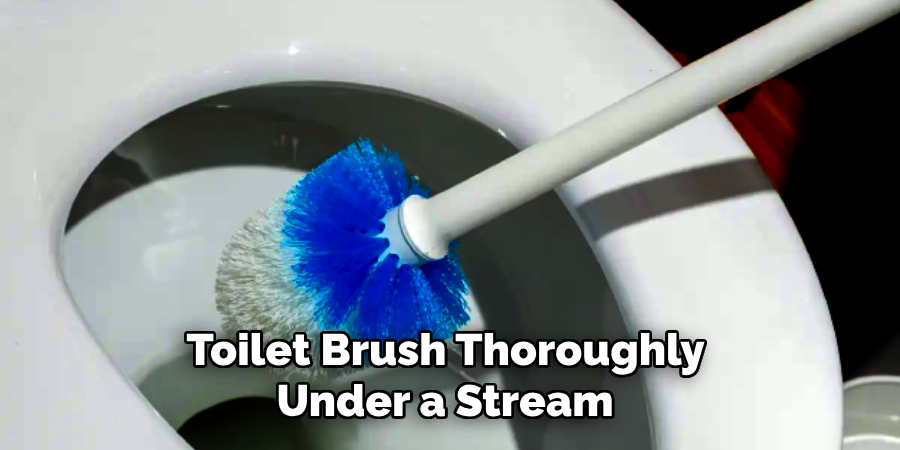
Step 2. Shake Off Excess Water:
After rinsing, shaking off excess water from the toilet brush is essential. Hold the brush over the toilet bowl and give it a few firm shakes to remove as much moisture as possible. Trapped water in the bristles can lead to bacteria growth and unpleasant smells, so this step is essential for maintaining a cleaner, fresher tool. Make sure to perform this step carefully to avoid splashing water outside the bowl. A dry brush is less likely to harbor lingering odors.
Step 3. Allow the Brush to Dry Completely:
Proper drying prevents bacteria and mildew from growing on your toilet brush. Once you’ve shaken off the excess water, place the brush in its holder in a way that allows for airflow. If the holder has a solid base, consider temporarily placing the brush at an angle or on the edge to avoid trapping moisture. Some holders come with ventilation features—if yours does, ensure it’s properly positioned for optimal drying. Allowing the brush to dry completely after every use helps maintain hygiene and prolongs its lifespan.

Step 4. Clean the Toilet Brush Regularly:
To ensure your toilet brush remains sanitary, it’s essential to clean it periodically. After use, soak the brush in hot water and disinfectant or bleach for about 10-15 minutes to kill any bacteria or germs. Rinse it thoroughly with clean water afterward and allow it to dry completely before placing it back in the holder. Regular cleaning keeps the brush in good condition and prevents the buildup of harmful microorganisms.
Step 5. Replace the Toilet Brush When Necessary:
Even with regular cleaning and proper maintenance, a toilet brush has a limited lifespan. Over time, the bristles may become frayed, discolored, or lose their effectiveness. It’s essential to replace the brush at the first signs of wear or if it develops an unpleasant odor that cannot be resolved through cleaning. Keeping a fresh, functional toilet brush ensures optimal hygiene and makes cleaning more efficient.
Step 6. Store the Toilet Brush Properly:
Proper toilet brush storage is crucial for maintaining hygiene and reducing the spread of germs. Always keep the brush in a well-ventilated holder that allows it to dry thoroughly after each use. Avoid sealing it in airtight containers, which can trap moisture and encourage bacterial growth. Ensure the holder is cleaned regularly to prevent the buildup of residue or unpleasant odors. Proper storage safeguards your bathroom’s cleanliness and extends the lifespan of your toilet brush.
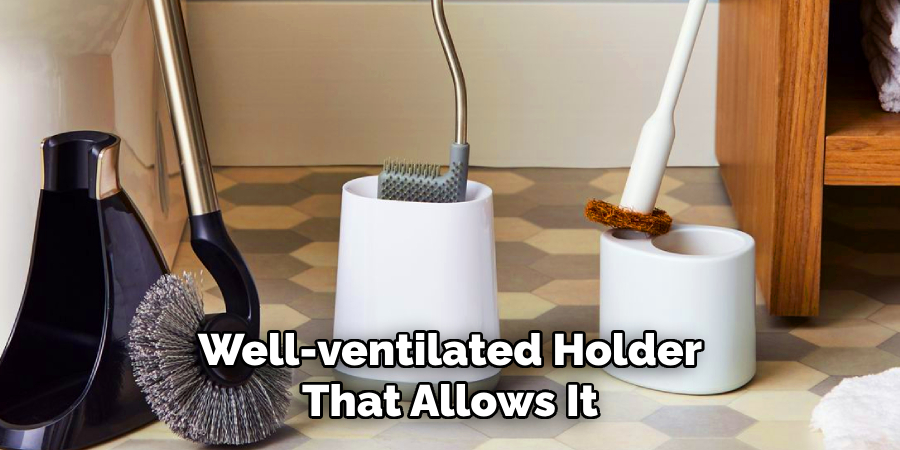
Step 7. Disinfect the Toilet Brush Regularly:
To maintain optimal hygiene, it is essential to disinfect your toilet brush regularly. After each use, rinse the brush thoroughly with hot water to remove any debris. At least once a week, soak the brush in a mixture of bleach and water or a disinfectant solution for about 10–15 minutes to eliminate germs and bacteria. Be sure to rinse it thoroughly afterward and allow it to air-dry completely before storing. Regular disinfection not only helps prevent unpleasant odors but also ensures it remains a reliable cleaning tool.
Step 8. Keep the Toilet Clean:
Maintaining a clean toilet not only improves the overall hygiene of your bathroom but also helps prevent toilet brush odors. By regularly cleaning and disinfecting your toilet bowl, there will be less waste and bacteria for the brush to pick up, reducing the chances of unpleasant smells developing. Additionally, using an automatic toilet cleaner or drop-in tablets can help keep the bowl cleaner for longer periods, making your cleaning routine even more efficient.
Step 9. Freshen Up with Natural Odor Absorbers:
Natural odor absorbers, such as baking soda, activated charcoal, or white vinegar, can be highly effective in keeping your toilet brush and holder smelling fresh. To utilize baking soda, sprinkle a small amount into the brush holder regularly to absorb moisture and neutralize odors. Similarly, placing a small activated charcoal sachet or pad inside the holder can trap unpleasant smells due to its porous structure. For an added touch of freshness, you can also rinse the holder occasionally with a mixture of water and white vinegar, known for its natural deodorizing and disinfecting properties. These simple, natural solutions are environmentally friendly and help maintain a more pleasant bathroom environment.
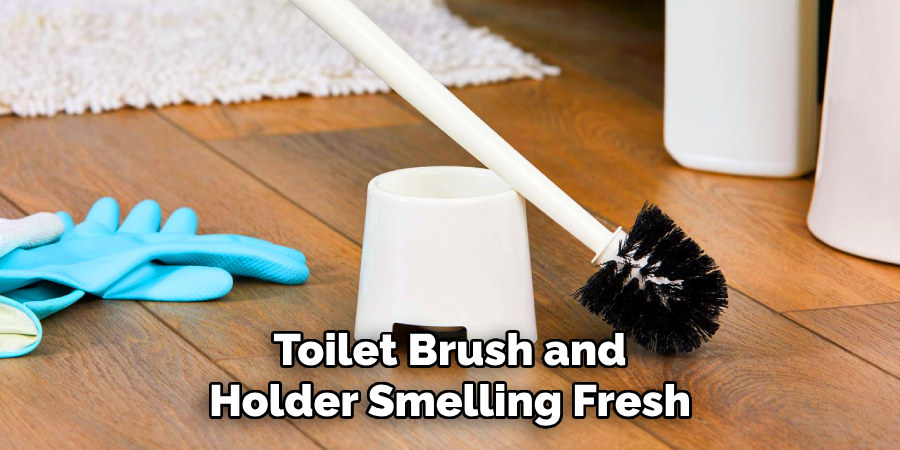
Step 10. Ensure Proper Ventilation:
Proper ventilation is crucial for maintaining a clean and odor-free bathroom environment, including the area surrounding your toilet brush and holder. Excess moisture can linger without adequate airflow, creating a breeding ground for mold, mildew, and unpleasant odors. To ensure optimal ventilation, consider installing an exhaust fan or opening windows regularly to allow fresh air to circulate. If your bathroom lacks windows or mechanical ventilation, a dehumidifier can be a practical and effective alternative for controlling excess humidity. Additionally, leaving the door slightly ajar after using the bathroom can help facilitate air movement.
Following these simple yet essential steps ensures your toilet brush remains a reliable and hygienic tool for keeping your bathroom clean.
5 Things You Should Avoid
- Storing a Wet Brush Without Proper Drying: Avoid placing your toilet brush back into its holder immediately after use without ensuring it is thoroughly dry. A wet brush creates a damp environment that promotes bacterial growth and unpleasant odors.
- Using a Non-Ventilated Holder: Steer clear of closed or poorly ventilated holders for your toilet brush. Without adequate airflow, trapped moisture can lead to mildew and lingering smells. Opt for holders with drainage or ventilation features.
- Neglecting Regular Cleaning: Always clean your toilet brush and holder routinely. Skipping regular cleaning can cause a grime buildup, contributing to foul odors and reducing the tool’s effectiveness.
- Using Harsh Chemicals Excessively: While cleaning is essential, avoid excessive use of harsh chemicals, as they can damage the bristles of the brush over time and shorten its lifespan. Opt for mild, effective cleaning solutions instead.
- Ignoring Bathroom Humidity Control: High humidity levels in your bathroom can make it harder to prevent odors. Avoid neglecting ventilation and moisture control methods, like running an exhaust fan or using a dehumidifier, to keep the area dry and odor-free.
By steering clear of these common mistakes, you can maintain a fresh and hygienic bathroom environment, free from toilet brush odors!
Conclusion
Maintaining a clean and odor-free toilet brush is a simple yet essential aspect of bathroom hygiene.
You can prevent unpleasant odors from developing by properly cleaning and storing your toilet brush, choosing holders with adequate drainage, and ensuring your bathroom is well-ventilated. Regular attention to these small but impactful habits enhances the cleanliness of your space and helps prolong the longevity of your cleaning tools. A little effort goes a long way in keeping your bathroom fresh and inviting.
Hopefully, the article on how to prevent toilet brush odors has provided you with useful insights and practical tips to keep your bathroom smelling clean and fresh all the time. Happy cleaning!

